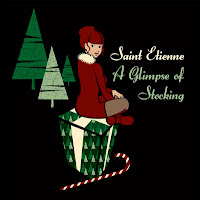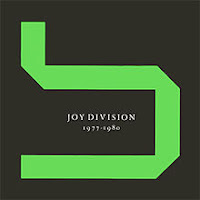
It would appear that Saint Etienne, who I didn't even realise were still operating, have released a festive fan-club only album called – fnarr, fnarr – A Glimpse Of Stocking. My days of being into the band roundly stopped after the best of album Too Young To Die, which I still listen to from time to time. I didn't intend to try and get a copy of A Glimpse Of Stocking (which collects every Christmas song recorded by the band) and after hearing the new track 'No Cure For The Common Christmas', I am even less likely to do so. Sonically, it sounds like 'I Was Born On Christmas Day', has the same euphoric (if jaded) Euro-disco edge, but like a pissed relative on Christmas Day, it falls down somewhere along the lines. I was quite looking forward to rekindling my love for Saint Etienne, but sadly not after this song.

This being my final blog of 2010, it seems appropriate anyway to talk about Christmas songs. This year, more than any, the magazine list writers have been attempting to persuade us punters to shell out on alternative Christmas albums – i.e. not the usual derivative compilations of Elton John's 'Step Into Christmas', John 'n Yoko's 'Merry Christmas (War Is Over)', Chris Rea's 'Driving Home For Christmas' etc – with Johnny Cash's overlooked Christmas album seeming to top the 'must have' lists.
But what makes a Christmas song 'good' anyway?' Is it a religious re-telling of the Nativity, messages of love and goodwill, glam rock anthems with choirs of out-of-tune Brummie kids or just a nice pop track adorned with tinkly bells? If there is no prescribed formula as such for a Christmas song, why can't a song like Pulp's 'Disco 2000' become established as a Christmas song?
'Disco 2000' was released way back in November 1995 and its chorus foretold the millennium fever that enveloped pretty much everyone who uses the Anno Domini calendar as 1999 passed into 2000. Getting released a shade too early for the Christmas top-spot that year ensured it was probably all but forgotten by the year end charts; later the band would prevent the song from being used in TV and radio adverts in 1999 / 2000, effectively scuppering many an ad man's wet dream of carelessly and lucratively tacking the song onto any product during that time.

Can 'Disco 2000' be held up as a Christmas song? Undoubtedly. It is an accessible pop song with a Slade / Wizzard-esque glam guitar introduction and a huge chorus ideally suited to Christmas / New Year parties of the time. Plus, by not being a Christmas song in the truest sense of the word (no Nativity, no religious undertones, no tinkly bells) it lasts all year, unlike Christmas trees, Bailey's and festive goodwill. Even at fifteen years old it hasn't lost any of its lustre and unexpected festive sparkle.
Have a great Christmas and New Year, thanks for following, and expect more weekly musical witterings next year.
'Disco 2000' is featured in my second annual Christmas short story, Josh & Laura, as the soundtrack for a scene set in a student end-of-term Christmas party (see, it works perfectly!). Josh & Laura can be downloaded as a PDF here.








